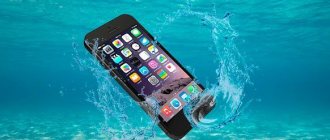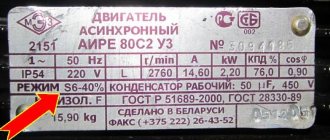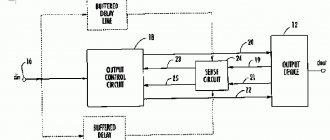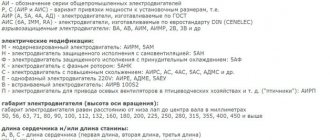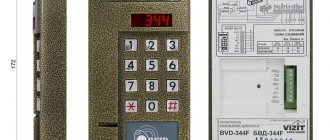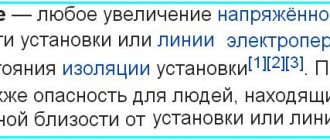You've probably noticed that there are some markings like “IPXY” on headphones, smartwatches and even smartphones. It happens that in such encryption, instead of “X” or “Y” there are some numbers, for example, “IPX5”. Such designations are typically used by manufacturers to indicate the water and dust resistance of a product. What exactly do all these numbers mean, and how can this help us in our daily lives? Let's try to understand this issue, step by step deciphering these very common, but rarely explained markings.
Electrical safety in the bathroom: IP class
A high degree of security is especially important for devices that have to operate in difficult conditions.
Such rooms in the house include the bathroom, the air of which contains a high percentage of water vapor. The highest, almost 100 percent, degree of humidity is observed directly next to the shower or bath. In this area, it is required to use low-voltage luminaires with the highest protection levels IP67 or IP68.
The area above the font or shower stall is also considered quite dangerous: splashes and steam enter here in large quantities. Devices marked IP45 are suitable for installation. If the lamp is planned to be mounted in the center of the room at some distance from sources of moisture, it is enough to choose an option with class IP24 or higher.
For the driest part of the bathroom, a product marked IP22 is recommended. Some degree of protection must be provided due to the background moisture content of the room and the possibility of steam release.
When selecting a waterproof outlet, it is better to give preference to one with a moisture protection class in the range of 4-6. If it is intended to be placed at a distance from a shower or font, marking 4 is sufficient. If located closer to possible splashes, the level of protection should be higher - 5 or 6.
To equip a bathhouse or sauna with lamps and/or other electrical appliances, you need to choose electrical accessories of class IP54 and higher.
IPX7 and other waterproof ratings on popular models
Lowrance is trying to make the device market diverse, so that every angler can choose a device to suit their own needs. Decoding the protection of ipx6, ipx7 and other categories helps to understand how harsh conditions a particular locator can withstand.
The modern degree of protection ipx7 is installed on popular models, such as:
- Elite-5Ti Mid/High/DownScan;
- HOOK REVEAL 7 TRIPLESHOT;
- HOOK2-4x GPS Bullet Skimmer CE ROW;
- HDS-12 LIVE Active Imaging 3-in-1
The moisture resistance of the devices not only allows you to go on harsh expeditions, but also extends the life of the onboard echo sounder. A high degree of impermeability makes it possible to use the echo sounder in rain, snow and other weather disasters.
Indicators: degree of protection IP65
In fact, the most common level of protection for electrical and other objects is the IP65 protection level. As we can see from the characteristics, such things have extremely high insulation from the influence of dust, and are also able to withstand significant splashes of water.
Description of equipment with IP65 rating:
- Absolute resistance to all penetrations of solid particles of the external environment and dust, as evidenced by the maximum possible index of 6.
- Sufficiently high resistance to penetrating moisture, up to withstanding streams and light water pressures of this type (index 5).
- Such products are intended for use in an open environment, which exposes them to all atmospheric conditions, including rain.
It is this IP degree that is the most used, since it belongs to the category of the highest quality in terms of protection. Examples include most mobile phones, protective cases for various applications, lamps, cables or ducts for electrical wiring, and many others.
Use in everyday life
Devices rated IP20 and below should only be used in enclosed areas with normal humidity. Such equipment must be low voltage and properly grounded to ensure safety.
The bathroom, toilet or kitchen in the house is characterized by high humidity and the possibility of water jets. According to the requirements of the standards, electrical equipment must comply with a class of at least IP66, and preferably several classes IP66/IP67, which ensures safety both when exposed to jets of water and when immersed in liquid.
The same requirements apply for outdoor use of the equipment. In other rooms, IP44 and even IP41 equipment is allowed.
IP protection level: decryption
In electrical engineering, the IP resistance level refers to a certain level of protection against external influences. These indicators are moisture resistance (water resistance) and protection of the object from dust penetration (dust and moisture protection).
They regulate a certain IP protection standard for each item. One of such acts is GOST 14254 - 96. The abbreviation IP literally stands for Ingress Protection Rating, the translation of which means the degree of protection from influences.
What has an IP rating
- Lamp housings, sockets, switches and other electrical equipment;
- Any housings and other protective shells;
- Outer shell of automobiles;
- Both electrical and telecommunications, ordinary cabinets and other closed objects.
This degree is assigned during testing, in accordance with which the degree of protection of the object from moisture, dust, and possible other influences is established.
What to do if there is no IP marking?
You've probably noticed that many devices can withstand dust and moisture without problems, even without a protection rating. Has it ever happened that you ran with Apple AirPods (they do not have a protection level indicated), and then wiped them with a wet cloth? In general, sometimes it depends on the design, and sometimes it just depends on luck. The IP rating is the only indicator that the manufacturer has somehow taken care of the use of its product in certain conditions.
But remember to read the instructions to know the terms of the warranty. As mentioned above, even the top IP67 protection of the iPhone XR smartphone does not provide a guarantee for damage from contact with liquids.
Original: IP what? Explaining water and dust resistance for audio gear
Table of decoding code values
1-digitProtection against foreign solid objects2-digitProtection against moisture
| no protection | no protection | ||
| 1 | From solid objects more than 50 mm; body parts, arms, feet, etc. or other objects with a size of at least 50 mm. | 1 | From drops falling vertically |
| 2 | From solid objects more than 12 mm; fingers | 2 | From drops falling at an angle to the vertical no more than 15° |
| 3 | From solid objects more than 2.5 mm; metalworking tools, wire | 3 | From jet drops falling at an angle of 60° to the vertical |
| 4 | From objects more than 1 mm; wire and other objects at least 1 mm. | 4 | From drops and splashes coming from any angle. |
| 5 | Partial protection from dust and complete protection from all types of penetration. | 5 | From jets falling at any angle. |
| 6 | Complete protection against dust and accidental penetration. | 6 | From pressurized jets. |
| 7 | Protection against exposure to water without causing damage | ||
| 8 | Protection when in water for an unlimited time. |
IPX4
This level will provide protection from direct splashes. For example, you can take the IPX4 device with you if you are planning to run a marathon in bad weather or decide to train hard in the gym. The IPX4 device cannot be immersed in water. Most sports headphones (wired and wireless) are assigned this level of protection, so problems should not arise. For example, Bose SoundSport Free headphones have this IP rating. Again, don't try to swim with this model.
IP waterproof
demonstrates the degree of protection against the negative effects of moisture (exposure to liquids, dampness). There are 10 degrees of protection of the case from moisture:
- “0”—no protection;
- “1” - the shell is protected from condensation moisture and raindrops falling strictly in a vertical position;
- “2” - the case is protected from drops, the angle of incidence is up to 15 degrees;
- “3” - there is protection against drops, the angle of incidence is up to 60 degrees;
- “4” - there is protection from liquid drops of any direction;
- “5” - protection from short-term exposure to a fluid flow (jet) of random direction;
- “6” - protection of the hull from prolonged exposure to a strong flow of liquid (water) of random direction, as well as from waves at sea;
- “7” - there is protection against moisture penetration into the inside of the equipment body during short-term immersion in liquid (water) to a depth of 1 m. In this case, there may be penetration of a small volume of liquid into the middle, which does not have an adverse effect on the performance of the products;
- “8” - there is protection against liquid flowing into the products when immersed to a given depth for a given period of time). The body of the products in this version is completely waterproof;
- “9” - there is protection against the penetration of a hot jet of water under pressure into the products.
The degree of protection of the outer casing (shell) from the influence of negative external conditions is established on the basis of performing a test of the working element. Below are tables with a detailed explanation of the degrees of protection, testing methods and sequences of their implementation.
For a convenient presentation, the classification of IP protection is shown in the figure.
Figure - Classification of IP protection
IP44: degree of protection and decoding
Let's look at several illustrative examples to correctly establish the dust and moisture protection of operating objects. One of the common IP protection levels is IP44. It is optimal for most devices, cases and devices familiar to us, since it is provided, according to indicators (4 and 4), with sufficient protection both from water and from the penetration of dust and other objects.
Characteristics of devices with IP44:
- As the table of symbols given earlier shows, the first 4 means that the item is sufficiently protected from most external threats, including small objects (bolts, cables, connections).
- The second indicator (4) shows that such a product is quite capable of withstanding minor exposure to water.
- The final difference (characteristic) is that devices with an IP44 protection level can be used in poorly protected places, for example, under a small canopy, a roof on the street, in special rooms, for example, with a high humidity level.
There is another significant detail in the classification of devices according to resistance to external influences. Possible additional wording or the presence of the letter x in the abbreviation instead of a number in some place has this meaning.
That is, x is a potential equivalent of any of the possible numbers, but most often 0. Thus, you can find not IP40, IP20, IP30, IP00, IP50 and IP51, but the corresponding IPx4, IPx6, IPx1, IPx8, IPx7, IP2x, IPx5, IPx0 , IP5x, which will symbolize an undefined criterion of protection from the corresponding impact.
In addition, in some cases, special additional characters are indicated, which also indicate operating features. Such symbols may include the letters A (protected from penetration by the back of the hand), B (finger), C (small tools), D (wire), H (high voltage), M (functional when tested in water), S ( does not work in water), W (weather resistance). Examples: IPx4d, IP21s, 1exibiict6, 1exibiict6x (explosion protection level).
Application of IPX7 degree of protection in other areas of technology
Telephony is not the only area in which this standard is applied. Most of the equipment with this level of protection is used in the fleet, regardless of whether it is civilian or military. Rescuers working in extreme conditions are also equipped with such devices. And of course, scientific research cannot do without such devices. Therefore, in the future, technologists will work to increase the degree of protection of various equipment.
In modern life, there are quite a lot of areas of human activity that require the use of various electronic devices, but the conditions in which they will be used require additional protection for them from all sorts of unfavorable factors. Therefore, technologists from various industrial companies are developing devices that would have an increased degree of protection against the penetration of harmful elements into the device.
There are different degrees of protection against various factors. Let's deal with just one of them. This is IPX7 - the degree of protection of the device from moisture.
There is a gradation of device safety from moisture, and IPX7 is a designation of one of the highest degrees of protection.
IP for electrical devices
The abbreviation IP, accepted throughout the world, has several possible decoding options: International Protection Marking/international security code, Internal Protection/internal protection, Ingress Protection Rating/degree of protection against interference.
The marking indicates the level of protection of a technical device from dust, solid objects, and water.
The data that characterizes the class of the device is determined experimentally using specially developed verification methods.
To determine the IP level, the international standard EC60529 is used, the analogue of which is GOST 14254-96, as well as the complicated German version DIN 40050-9.
On the territory of Russia, any equipment installed indoors must comply with PEU - rules for electrical installations, technical conditions - TU, GOST R51330.20-99.
According to the accepted Russian and international classification, the maximum level of protection is marked with the IP68 code.
This designation indicates that the device is completely dust-proof, which can also remain in water for a long time, experiencing significant pressure.
The highest degree of protection provided by the DIN system is marked as IP69-K; Such marks are applied to products that can withstand high-pressure hot water washing.
You can find devices that have an undetermined degree of protection. In this case, the digital designation is replaced by the letter “X”, that is, the marking will look like “IPX0”. This designation may also be followed by one or two Latin letters.
Table of values
So, here is a table of IP protection levels that will be useful for home electricians when choosing electrical equipment for outdoor installation, rooms with high humidity, and also in dusty warehouses:
To make the material clear to you, we offer another option for decoding IP in accordance with GOST 14254-2015.
1 digit (X1) means:
- 0 – the electrical appliance is not protected; it can be installed in special cabinets or panels that will prevent direct contact with live parts.
- 1 – the design is designed in such a way that a person cannot touch hazardous areas of electrical equipment with his hand or an object thicker than 52.5 mm.
- 2 – you cannot approach dangerous zones with an object whose thickness is 12.5 mm (or with your finger). Most often, circuit breakers, RCDs and some lamps have this degree of protection.
- 3 – the device is protected by a housing that cannot be penetrated without a special tool. An object thicker than 2.5 mm will also not be able to penetrate inside the protective shell.
- 4 – a higher degree, which prevents the entry of objects with a diameter of more than 1 mm. A thick wire will not get inside the case without disassembly.
- 5 — high dust protection is provided. The equipment can operate in occasionally dusty areas, as well as when sand gets on the shell (for example, in warehouse areas).
- 6 – maximum value, complete protection of electrical equipment from dust and solid particles.
2nd digit (X2) means:
- 0 – the device is not protected from water. In this design, there may be some switching devices installed in the panel (RCD, circuit breakers with IP20 degree).
- 1 – protection is provided against drops falling on top of the device shell.
- 2 - essentially the same design as with IP X1, but the housing design can protect the product from drops at an angle of 15°.
- 3 – the angle of inclination of the drops can reach 60°; water ingress from the bottom is not allowed.
- 4 – protection from splashes and rain is provided.
- 5 – the housing is designed in such a way that a weak stream of water will not harm the operation of electrical equipment.
- 6 – the shell is impenetrable to strong jets of water and water currents.
- 7 – short-term or partial immersion under water is allowed.
- 8 – means that the product will remain under water for a long time.
- 9 - the highest degree of IP protection from moisture, long-term immersion under pressure is allowed (including protection from hot water jets).
We also talked about the fact that in the IP marking according to GOST 14254-2015 there may be two additional letters after the numbers. The first (can be A, B, C or D) gives electricians an idea of how protected the housing is from people entering dangerous parts of electrical installations. The decoding of the degree of protection in this case is as follows:
- A – protective shell prevents touching with the back of the hand;
- B – protection against penetration of a finger into the body;
- C – access to the hazardous area is prevented by the tool;
- D – the possibility of wire penetration is excluded.
The second letter carries additional information and has the following meaning:
- H – high-voltage equipment, voltage up to 72.5 kV.
- M – during moisture protection tests the device was in motion;
- S – during the same tests the device was stationary;
- W – the housing is protected from weather conditions.
That, in fact, is all that the IP protection level for electrical installations is. As you can see, today the maximum index is IP69. Below we will also look at which product labels are best to choose for different types of premises, as well as the street.
Designation table
The easiest way to present information is in a tabular format. Let's start with the first number.
Table 1 - fool proof and dust protection
| Protection class | Objects of protection | Explanation |
| – | There is no protection. | |
| 1 | From objects with a diameter of 50 mm and above. | Back of the hand; accidental touch. |
| 2 | From objects with a diameter of 12.5 mm and above. | Fingers, large bolts. |
| 3 | From objects with a diameter of 2.5 mm and above. | Tools - screwdrivers, pliers, thick cables. |
| 4 | From objects with a diameter of 1 mm and above. | Fasteners, wires and cables. |
| 5 | Dust. | Minor dust penetration is acceptable but does not affect the operation of the device. |
| 6 | Dust. | Absolute dust protection. |
Designs with safety levels 5 and 6 completely protect their contents from contact with the surface of the human body, even accidental.
Table 2 - protection from water
| Class | Water hazard level |
| There is no moisture protection. | |
| 1 | Drops of water falling strictly vertically. |
| 2 | Water dripping vertically or with a deviation relative to the vertical of up to 15 degrees. |
| 3 | Falling large drops with a deflection angle of up to 60 degrees. The product is protected from light rain. |
| 4 | Large drops, splashes flying in any direction. |
| 5 | Water jets of any direction. The product will withstand heavy rain. |
| 6 | Sea or river waves (short-term splashing with water). |
| 7 | Short-term immersion to a depth of 1 m. Permanent operation in water is not guaranteed. |
| 8 | Dive to a depth of 1 m or slightly more for up to 30 minutes. Protected nodes perform their functions under water. |
| 9 | Long-term exposure to high-pressure hot water jets, the device can withstand high-temperature pressure washing. |
IPX7/8
If you're a klutz who always drops your phone, camera, and watch into the water, then you might want to avoid buying anything with a rating lower than IPX7. This protection will save you from water: the gadget will withstand immersion of one meter for up to 30 minutes. If you want more, then the IPX8 device can be immersed even deeper (how much depends on the manufacturer) for the same half an hour.
Wireless speakers rated for aquatic environments (such as the UE Wonderboom and JBL Boombox) are always rated at least IPX7. Some electronic readers can boast the same rating. Top smartphones like the Samsung Galaxy S9, S10 and iPhone XS/XS Max have full IP68 protection. They are not afraid of either dust or water. These smartphones can be washed carefully, but you must do everything according to the instructions.
Smartphone protection level
Most well-known phone models, including smartphones, correspond to a level starting from IP 44, although the most commonly used devices are IP55 and IP66.
Important! The device may allow splashes, but you should not leave it in the rain for a long time, since a continuous layer of water on the surface will cause moisture to get inside the device. Here you can clearly see the difference between moisture resistance and water resistance
To check whether there was high humidity inside the case, you can remove the battery. Typically, a phone battery has a special indicator near the terminals, which changes color to red due to high humidity or water ingress.
On sale you can find a smartphone with a rubberized casing. According to the manufacturers, the phone complies with the American military standard MIL-STD 810G. This should mean that the device can withstand large changes in temperature, pressure, shock and drops.
Dust and waterproof shockproof smartphone
Note! There are doubts that at this cost all the requirements of military standards are met, although numerous checks and tests show that these devices have better protection from water and physical stress than standard models. IP 67 is sufficient for use in harsh conditions
The moisture protection of the devices is quite decent and can be dropped into water. The powerful case reliably protects the internal filling from damage from impacts and falls
For use in difficult conditions, an IP level of 67 is sufficient. The moisture protection of the devices is quite decent and can be dropped into water. The powerful case reliably protects the internal filling from damage from impacts and falls.
Military laptop according to MIL-STD 810G standard
Protection class IPX7
These products can be placed under water for a short period of time.
When they are immersed, liquid may enter the electrical equipment, but this should not lead to disruption of its operation.
This marking is used for GPS navigators, echo sounders, electrical equipment used for tourism and mountaineering, etc. Gadgets that can be used for active sports are often labeled this way.
IPX7 rated electrical appliance
Immersion of electrical products for testing is carried out (according to IEC 529-89) in accordance with the following requirements:
- the lower part of the product must be located at a depth of at least 1 meter;
- the layer of water above the top of the product must be at least 15 centimeters thick;
- full immersion time – at least 30 minutes;
- The temperatures of the water and the product must be the same; a temperature difference of ± 5°C is allowed.
A discrepancy in temperature indicators may be larger, but only if the equipment being tested is energized or has parts that move during operation. This discrepancy value can be determined for a specific device in agreement with the customer and the manufacturer.
Most often, testing is carried out in the temperature range from +15 to 35°C. Therefore, using them in baths or saunas can damage the electrical device.
Attention! When using gadgets with this protection class, it is not recommended to press buttons under water. Also, when diving, all openings must be closed.
Thus, if you need to use electrical appliances in a humid environment, or if water may enter the device during operation, you need to purchase equipment rated IPX7 or IPX6.
Decoding the degree of protection
This section covers the most common IP classes:
- IP20. The housing of the device can only protect the internal elements from intrusion by objects up to 12 mm in size. The devices are used in dry, clean, heated premises: residential and administrative and public buildings, shops, theaters, etc.;
- IP21 and IP22. Devices with class IP21 and IP22 are protected from condensate penetration - they are installed in unheated rooms and outdoors under a canopy;
- IP23 - outdoors without a canopy;
- IP44. This includes electrical appliances that are protected from accidental contact with drops of water and solid objects. They can be installed in bathrooms, but in open spaces this degree of protection is insufficient;
- IP54. Devices for objects with high humidity - saunas, swimming pools, bathrooms. They are also installed under awnings. The case may let a small amount of dust inside, but this will not affect the performance of the device. Liquid splashes, regardless of the direction of contact with the shell, will remain outside;
- IP67. Devices for ships (deck) or, for example, pool lighting, but not intended for constant operation under water. They will remain operational if immersion in liquid was short-term. Index “6” means maximum protection from dust;
- IP68. IP68 class devices, for example, fountain lighting, can be in the water at all times;
- IPX4. Splash-proof devices without specifying the level of dust protection. Installed in unpolluted rooms with high humidity.
Some devices have two IP indexes. Example - a socket with a cover: marked IP 24*44. The first value characterizes the socket with the cover open, the second - with the cover closed.
Ways to achieve increased moisture protection
Modern technologies are already at the level where the IPX7 class (the degree of protection of the phone) is achieved without compromising the appearance of the device. After all, not so long ago, a phone protected according to the IP67 standard could be easily identified by a unique case that preserved the gadget. And modern smartphones are practically no different from their counterparts, which have a lower degree of protection. In addition, it announced that all watch models released by it have a degree of protection IP67. Therefore, any owner of such a device can even take a shower in them without fear. But, of course, not all users of this product decide on such an experiment, since the cost of such smart watches exceeds four hundred dollars.
Let's look at examples
IP55 protection degree means that the housing or shell of the product - it can be anything, a power cabinet, starter, machine, RCD, switch, etc. - provides complete protection against accidental contact of internal components under current with a finger, screwdriver or thin probe . In this case, slight penetration of dust inside is allowed (the housing is not sealed), which should not cause interruptions in the operation of the device. It also has reliable protection against rain. This is a “street” class of product, but it will no longer withstand being doused with water, for example, from a bucket.
The degree of protection class IP44 is a “safe” design of products designed to work indoors, but in conditions of high humidity. This class must correspond to sockets, switches and other elements located, for example, in the bathroom. In fact, they can look like sockets with lockable covers and automatic “shutters” on the contacts. They should not be protected from dust, but a short circuit from accidental ingress of moisture is excluded. Touching them with wet fingers is also safe.
What can a low protection class offer? Let's get acquainted with the degree of protection class IP20. A product of this class protects its contents only from penetration of fairly large objects, about a finger in diameter. From a constructive point of view, this could be, for example, an installation box. It may have small technical holes for tools - tester contact probes, screwdrivers, and so on. It can only be placed indoors or inside another electrical cabinet with a high degree of protection, since even from above such a product is not protected from moisture.
Decoding the degree of protection
The marking includes numbers from 1 to 9, and an increase in the serial number of the code indicates an increase in the degree of protection. Dust and moisture protection, according to the classifier, ranges from IP00, when the structure is completely unprotected, to IP 69 with the maximum level of safety.
If tests have not been carried out for any parameter, then the manufacturer is obliged to inform the consumer accordingly, that is, reflect it in the labeling by putting an “x” sign, for example, IP5X.
First digit
The first symbol characterizes protection from dust and mechanical objects. The larger the number, the smaller the resistance to smaller objects is guaranteed:
- 0 – complete lack of protection;
- 1 – protection from accidental touches, large objects (50 mm), lack of protection from deliberate influence;
- 2 – protection against contact with fingers and objects larger than 12.5 mm;
- 3 – it is guaranteed that tools, cables and particles larger than 2 mm cannot enter;
- 4 – impossibility of ingress of wires, fasteners and particles larger than 1 mm;
- 5 – partial protection against dust, which does not affect the performance of the device;
- 6 – full guarantee against dust.
The sixth class guarantees complete protection against any possible contact of parts of the human body with the elements of the device.
Second digit
The second digit of the marking carries broader information, since it guarantees protection from moisture (drops, splashes) and immersion in water. Normal functioning is ensured both during interaction with unfavorable factors and after that.
Important! Waterproof and waterproof have different meanings, with the second property providing greater reliability. Waterproof watch
Waterproof watch
In this case, classification is complicated by the fact that splashes of water can hit the device from any direction; accordingly, protection must ensure the operability of the devices in all situations. The class table looks like this:
- 0 – no protection;
- 1 – normal operation of the device when vertical drops of water enter;
- 2 – operation of the device when drops are deflected at an angle of up to 15⁰;
- 3 – protection from rain splashes at an angle of up to 60⁰ to the vertical;
- 4 – splashes from any direction are allowed;
- 5 – protection from continuous jets of water;
- 6 – improved protection against jets (strong jets are allowed);
- 7 – normal operation during short-term immersion in water to a depth of 1 m;
- 8 – normal operation with a duration of stay in water of up to half an hour at an immersion depth of up to 1 m;
- 9 – protection against high-temperature, high-pressure water jets.
According to the data provided, the highest and most common degree of protection is provided for equipment of the IP 68 class. IP 69 devices are used in car washes and similar enterprises. For domestic use, the ip67 class is quite sufficient, since according to the degree of protection ip67, the decryption should mean:
- the device body ensures that dust cannot get inside;
- Accidental exposure of the device to water will not disrupt operation.
Note! The above classification does not have a position that guarantees the operability of the structure when in water for a period of one hour or more. This requirement is satisfied by following the standards for military equipment
In addition, such standards provide for a higher degree of reliability when exposed to physical stress (impacts, accelerations).
Additional letters
In the event that the degree of protection is increased compared to the classification, or does not fall under the classification (first digit X), then an alphabetic symbol may be added after the digital designation:
- A – protection against touching the back of the hands;
- B – finger protection;
- C – impossibility of touching with the tool;
- D – impossibility of wire penetration;
- H – symbol for designating high-voltage equipment;
- S – device operation during water resistance tests;
- M – switching off the device for the duration of the test;
- W – resistance to other weather conditions.
Note! There is a flaw in the classification that devices that can withstand immersion in water may be poorly protected from water jets. Therefore, for structures that fall under several classes simultaneously, double marking is allowed, which is indicated through a fraction sign, for example, IP65 / IP68
Does IPX8 mean waterproof?
No. The term "waterproof" has little to do with reality. A truly waterproof device does not allow water to enter at all under any circumstances. This happens extremely rarely. The mentioned IPX8 rating ensures the device's functionality after accidental or acceptable contact with water, but this does not mean that the gadget must be constantly used underwater.
In fact, if you come across waterproof gadgets (watches, for example) with the appropriate markings, then there is still no 100% guarantee that the item will survive being submerged in water. If the specifications don't say anything, then the product you purchased most likely hasn't been individually tested. Manufacturers test only one new unit, and all other devices of the same configuration receive markings indicating water resistance.
If you need a device that is designed for underwater use and diving, then you should pay attention to specialized products with an ISO 6425 rating. Watches with this protection are individually tested and must withstand immersion 25% deeper than stated in the marking. In addition, such watches can be used underwater repeatedly for long periods. Pressure changes during dives and ascents should not affect the operation of the device.


